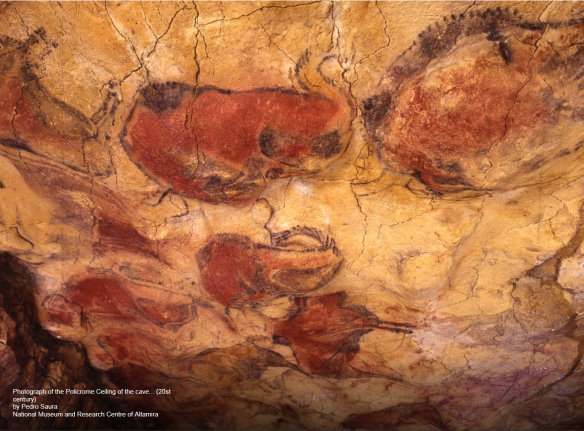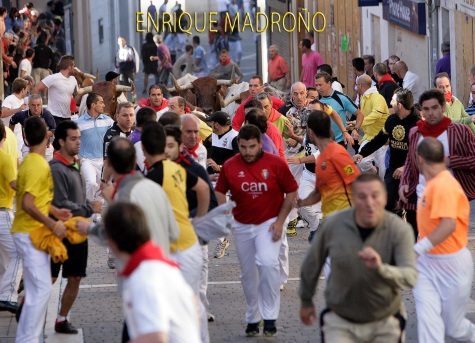When I first went to my first bullfight almost 25 years ago, I was 23 and was sure I would hate it. I was a passionate animal lover and had been a keen amateur naturalist since childhood, a member of the WWF (which I remain to this day) & Greenpeace, a former zoology undergraduate student at the University of Oxford, and then-current philosophy postgraduate student at the London School of Economics and Political Science. (I am currently doing postgraduate work, again at the University of London, this time in neuroscience.)
It should be obvious that this is not an auspicious CV for a future aficionado a los toros.
As expected, what I saw contained many moments of brutality and blood but I was surprised also to find I could see beyond them to feel moments of breathless thrill as well.
What genuinely shocked me, though, was that I could also perceive intermittently, and only with one of the bullfighters present, a type of beauty that was entirely new to me.
In my moral confusion, I decided to research this alien thing, reading what I could in English – Ernest Hemingway, Kenneth Tynan, Barnaby Conrad, A. L. Kennedy etc. – and going when possible to see a corrida, a ‘bullfight’, on my annual visits to Spain. Each time I went with a little more understanding and a little less aversion. Some would argue I became more sensitive to the aesthetics, others that I had become more inured to the ethics (or lack thereof.) I wouldn’t like to say either way.

Into The Arena: The World Of The Spanish Bullfight was published by Profile Books in 2011 and shortlisted for the William Hill Sports Book Of The Year Award – the oldest and richest sports writing prize in the world – the same year.
Following my controversial essay on the subject for Prospect magazine, ‘A Noble Death‘, in 2008 I was commissioned to write a book and moved to Spain for two years. Among other researches, I trained as a bullfighter to the level of matador de novillos-toros, facing endless cattle from old, heavy and wise to young, light and fast. I ended by killing a single animal in the ring, a novillo, a three-year-old bull weighing around a third of a ton.
As part of the research, I also participated in the encierros, ‘bull-runs’, of Pamplona and ran with fear and ignorance among the masses of drunken foreigners and adrenaline seekers who fill those streets.
Unlike those visitors, I returned, and ended up running in towns across Spain, away from the tourist trail and among those born to this bloodless and less ritualised, more pagan practice. This led to my second book – as editor and co-author, The Bulls Of Pamplona, with chapters by the Mayor of that city, John Hemingway – grandson of Ernest – Beatrice Welles – daughter of Orson – and many others.

The Bulls Of Pamplona, edited by AFH and co-authored with a foreword by the Mayor of Pamplona and co-authored by John Hemingway, Ernest’s grandson, Beatrice Welles, Orson’s daughter and many others.
This makes me singular in my afición in English-speaking countries but in Spain – or Portugal, France, Mexico, Colombia, Peru, Ecuador, Venezuela – the picture is very different.

Alexander Fiske-Harrison running with the Torrestrella bulls of Álvaro Domecq – striped jacket – in Pamplona (Photo: Joseba Etxaburu – Reuters)
According to the annual figures on asuntos taurinos, ‘taurine matters’, published by Spain’s Ministry of Culture, the bulls are on the way back for the first time since the world economy collapsed in 2008.
When I first came to Spain to research in 2007 for Prospect magazine there were 3,691 major public bullfights that year, including corridas, of which there were 953, alongside novilladas with novices, and rejoneo with horseback bullfighters.
Following the financial crisis of historic proportions the next year, there was a precipitous drop in numbers, not only for bullfighting but all expensive live spectacles such as theatre and opera. This drop evened out, averaging at a 6% annual fall until I began researching my second book in 2015, when the fall in corridas was 1% per annum.
However, after COVID-19, the number of bullfights of all kinds in total in 2022 was up 8% on 2019 at 1,546 and the number of full corridas up 18% at 412. Continue reading




 Yesterday Google opened its page with an image from the Cave of Altamira, the oldest known art, painted on walls deep underground in Cantabria, northern Spain. (I have written about them in more detail in my chapter on the history of the region in the recent book
Yesterday Google opened its page with an image from the Cave of Altamira, the oldest known art, painted on walls deep underground in Cantabria, northern Spain. (I have written about them in more detail in my chapter on the history of the region in the recent book 









